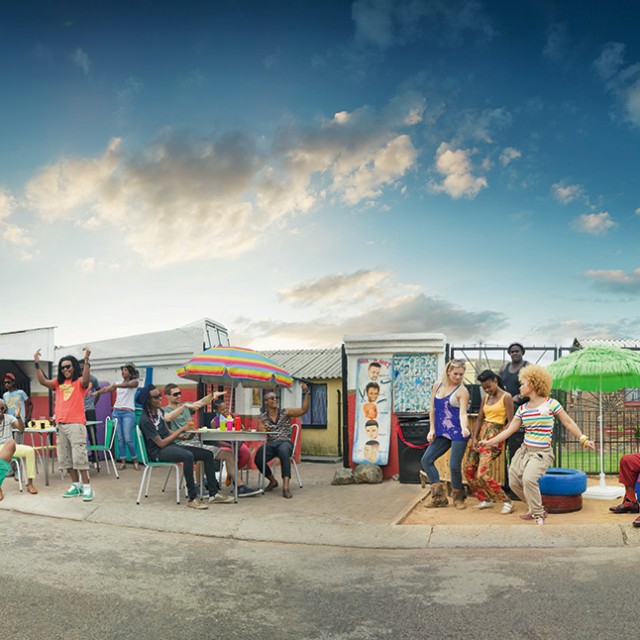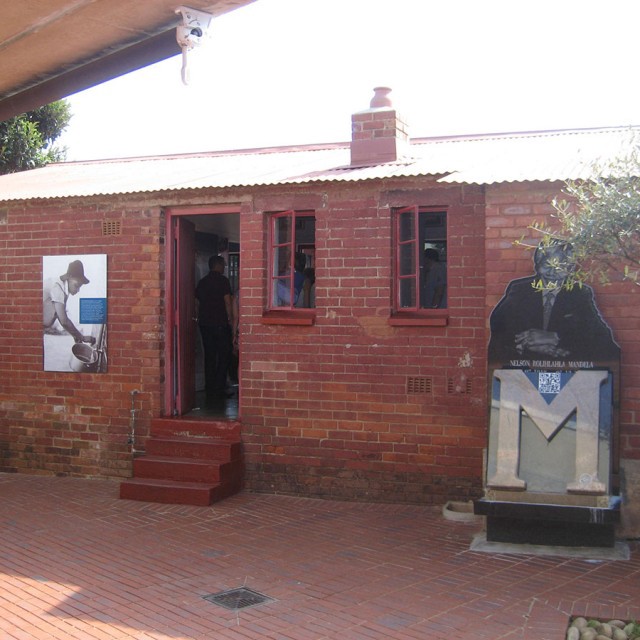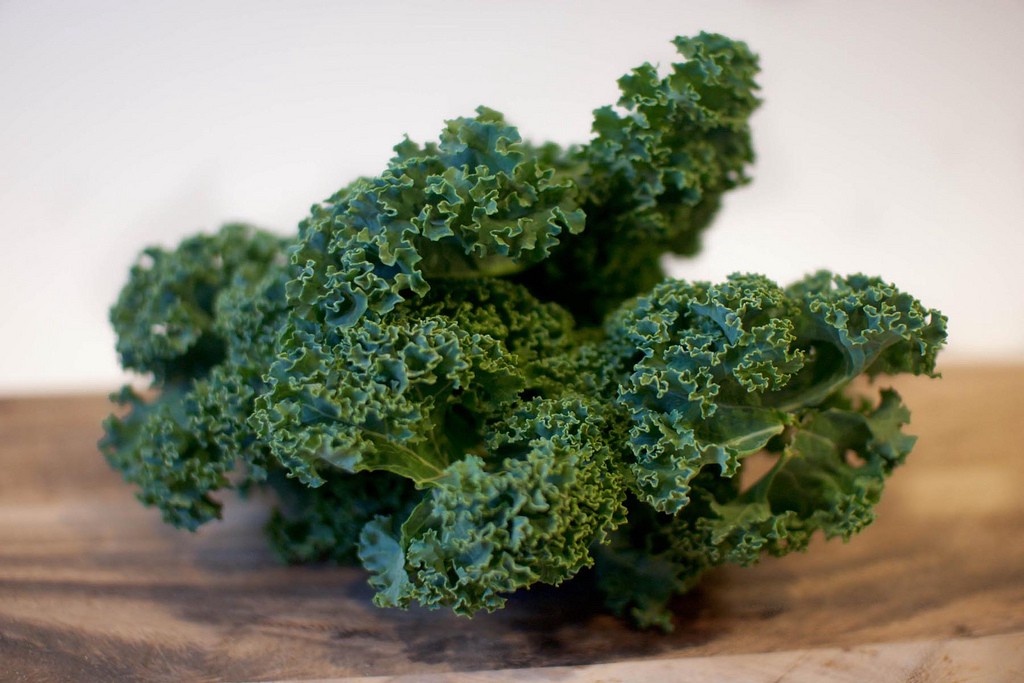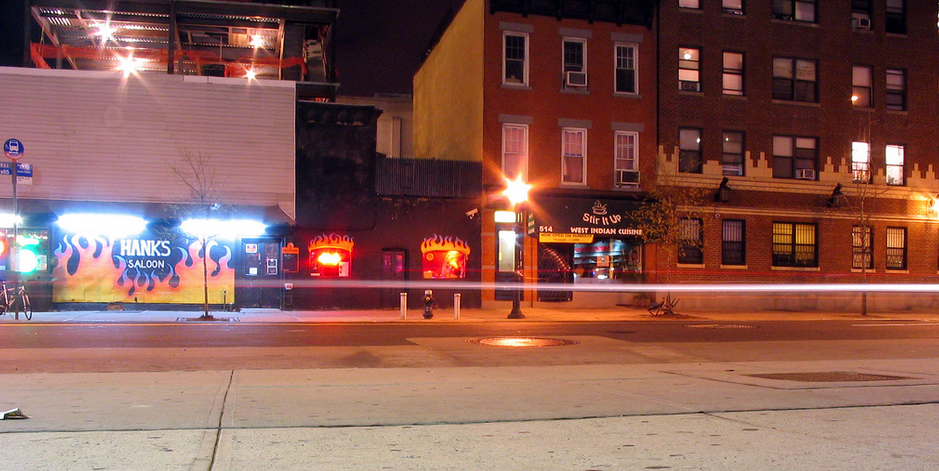Maybe You're Sad Because You're Not Telling Yourself To Be Less Sad

Having a hard time during the holidays? The line forms to the rear, say hi on your way back there, I’ll be the guy with the frowny-face and the red, watery eyes. But all is not lost! The Wall Street Journal has some tips to help you weather the storm. Some of them are common sense, sure, but this struck me as potentially helpful: “’Several studies have shown that writing yourself a caring, supportive letter about the issue you are struggling with significantly increases happiness, improves mood and facilitates coping with negative emotions,’ says Dr. Emiliana Simon-Thomas, science director of the Greater Good Science Center at the University of California, Berkeley.” That does not sound like a bad idea, right? I could use some sympathetic words, and God knows they’re not going to come from anyone else. Let’s give it a shot. Here’s mine:
Dear Balk,
I know you’re sad right now. Hell, let’s be honest, when are you not sad, am I right? Quick impression of you: “Boo hoo hoo, I’m so sad. Everything is terrible and only getting worse. I walked down the street yesterday and in each face that brushed by mine by I saw a story of sorrow. There’s no hope for the future and only the delusional can take joy in what’s left. It’s a slow trudge to the tomb but I’m going to prize every teardrop I shed along the way because I am so self-regarding and unable to put things in perspective that I cannot see how petty my problems are compared to the suffering that everyone else experiences. Poor sad sensitive me.” Etc. You’re kind of a drag to be around, you know? But listen up. As I am here to be supportive and caring during this dark time for you, I want you to know I have thought a lot about your problem and, if it makes you feel any better, you are actually right to be sad: Everything is terrible and only getting worse. The best days passed you by a long time ago and you wasted even those. The world is in such a state that diminishing returns are the most optimistic thing to expect, and I wouldn’t exactly hold your breath waiting on those to come through. More importantly, you are correct about your own worthlessness, and the astounding level self-involvement it takes for someone with all the unearned advantages that glide your path each day to wallow in his own feelings of being a little blue is so beyond unseemly that it is almost vomit-inducingly disgusting. You’re pathetic. So don’t give yourself such a hard time about what a waste of space you feel like you are, because you’re absolutely right there. Just try and be a little more quiet about it, okay? “BLAH BLAH BLAH POOR ME,” nobody wants to hear that. Anyway, I hope this helps. Happy holidays!
Your colleague,
Balk
You know what? I do feel a little bit better! It’s comforting to be told that I’m not imagining things. In fact, now that I’ve seen it written down like this, I feel like this is going to be the best Christmas ever. Maybe I’ll even die! Know hope, everybody. Know hope.
Eat the Ginger

Around Christmastime, when you search for recipes with “ginger,” you get exclusively sweet things: gingerbread, gingersnaps, ginger cake, ginger donuts, ginger biscotti, ginger muffins. But ginger is so much more. It’s one of the four or five ingredients that I am never, ever without. I would like to share with you my One Weird Trick for using ginger in a foolproof and easy way.
Nearly everything I cook starts with the same process: Get out a pan, put some oil in it, and saute some combination of chopped plants; on Top Chef this is referred to as “building flavor,” or sometimes as creating a base. Onion is pretty much a given. Garlic, usually. Also common are celery, carrot, and peppers. (Depending on which specific ingredients you use and the various subtleties of how you use them, these base ingredients are sometimes called mirepoix, or soffritto — or, confusingly, sofrito, which is not the same thing; soffritto is Italian, sofrito is Spanish/Latin American, with slightly different ingredients depending on even which Latin American country you’re talking about.) Ginger is a key ingredient in a flavor base for so, so many cuisines — Indian, Chinese, Thai, Jamaican, Vietnamese, Japanese, Indonesian, Malaysian, and Filipino — so it should be as present in your cooking as garlic or onion, and you should have it on hand at all times. This can be difficult, because though it is fairly hardy, it will dry out after a while, and what if you have a stretch where you’re only cooking French or Italian food? Your ginger will go bad.
Except it won’t, because you should freeze your ginger.
Ginger is often referred to as a root, because it grows underground and is sort of rooty looking, but it’s technically a rhizome, which is more like an underground stem. It’s native to China, which accounts for its prominence throughout Asia, but it was also the very first crop to be grown in the New World and exported back to the Old World, so the place where it was grown (Jamaica and surrounding islands, mostly) also developed a taste for it.
You should hardly ever freeze whole produce; it will turn to mush when the cell walls break during thawing. But frozen ginger doesn’t suffer from this, because you don’t need to thaw it. Simply toss the ginger in the freezer and when you need it, break off a knob — which should be fairly easy to do — then grate it with a good microplane. (Not some garbage knockoff. I have this one.) Start grating it over a bowl from the broken-off end. It will create fluffy ginger snow. Do not bother peeling it; not only is the peel edible, you won’t even notice it since you’re microplaning it into oblivion.
Frozen ginger will keep for a good few months, long enough for you to use it even if you don’t use it as often as I think you should (which is very often). Let me tell you: microplaned ginger packs all the punch of fresh. (One warning: Microplaned ginger, being in much smaller pieces than chopped ginger, will burn if you’re not careful, so be observant and use low heat.)
There isn’t really all that much variation in types of ginger, but there are three you should probably know about. First is your standard type — knobbly, tan to brown on the outside and yellow on the inside. This is available year-round, mostly grown in India and China; just don’t buy anything that looks shriveled or soft and you’ll be fine. Second. young ginger is only available seasonally, from around October to May, but is easiest to find in the spring. It’s pale, almost cream-colored, and ends in a pink tip. It is mild enough to eat raw without making your entire dish taste like ginger, and is traditionally used for that pink pickled ginger you get with sushi. The final type is galangal, which isn’t a type of standard ginger but is actually another, similar plant in the ginger family that is slightly paler and much harder to cut. Galangal is used most commonly in Thai cuisine, and Thai cooks will tell you that you shouldn’t substitute ginger for galangal, but galangal is really tricky to find and ginger’s flavor is at least similar enough that it’s better to use ginger than to use nothing from the ginger family.
RECIPES
Pretty much anything you make with Asian (East or South) flavors should include ginger, like this incredibly basic stir-fry. Grate a knob of frozen ginger about the size of your thumb with a microplane. Chop a few cloves of garlic, half an onion — any kind is fine — and one chile of your choice (or a small plop of sambal oelek, the bright red chile-garlic paste you find next to the sriracha). Get out your wok and turn the heat on low. (Note: Woks are supposed to be blasted with more heat than a New York City home kitchen is legally allowed to provide, but your tiny slivers of ginger will burn if you use too much heat at first.) Pour in some oil (peanut is best, vegetable is fine, olive is, like, okay, but use one of the others if you can) and let it heat. Toss in one small piece of onion; if it sizzles, you’re ready to go. If not, wait. When the wok is hot enough, toss in the onion and stir until translucent, then add the chile, the garlic and ginger, in that order. Stir constantly so as not to burn anything. Meanwhile, chop some sort of small crunchy green vegetable — green beans, zucchini, snow peas, or even brussels sprouts if they’re small enough. Maybe you’d also like some tofu. When the stuff in the wok is super fragrant, crank the heat up to high and throw in your vegetables and that tofu if you want. Stir constantly. Turn off your smoke alarm when it goes off. It’s done when it’s all hot and not raw-tasting, but still super crisp. Then toss with a mixture of soy sauce, mirin (a sort of sweet rice wine), and rice wine vinegar in a ratio of around 1:2:2, but taste it and adjust until it tastes right. Add in a couple drops of sesame oil and salt if necessary. Serve as is or with rice.
GINGER-LIME TEA
Ginger tea is one of those magical healing liquids that I drink theoretically when I’m sick but mostly because I just like it a lot. It’s also incredibly easy to make. If you have frozen ginger, take out two thumb’s worth and microwave for fifteen seconds, just until you can slice it. Then slice as thinly as you can into discs. Put them in a small pot of water on the stove and bring to a boil, then lower the heat to simmer and simmer it for maybe thirty or forty minutes. Strain out the ginger and discard, and then sweeten with sugar and sour with a squeeze of lime juice. That’s it! Oh, or: you can also, after straining out the ginger solids, keep this on the stove for another twenty minutes or so. This will reduce the water and make the tea stronger. Add a bit more sugar than you would for the tea, then reduce it even more, until it seems more viscous than before and tastes incredibly strongly of ginger. Now what you have is ginger syrup. In a tall glass, put in a bunch of ice cubes, then fill halfway with your new ginger syrup and fill the rest of the glass with seltzer. Mix thoroughly and you have homemade ginger ale.
BASIC GINGER VINAIGRETTE
This goes well on everything: raw vegetables, stir-fried vegetables, fish, chicken, beef, tofu, noodles. Take out a small container and microplane a knob’s worth of frozen ginger into it. Add rice wine, cider, or plain white vinegar, and mix. Pour in a touch of olive oil, less than you would for a traditional vinaigrette. Then add in some brown sugar, and taste. Too sour? Add more sugar. Too sweet? Add more vinegar. THIS IS ONE OF THE WORLD’S GREAT SALAD DRESSINGS AND IT TAKES TWO MINUTES TO MAKE.
SHITTY WINTER VEGETABLE AND GINGER SALAD
This works with any winter vegetable you can find, but is best when beets are included. Other possibilities: turnip, celeriac, kohlrabi, rutabaga. Peel and cut into matchsticks. (Yes, raw. Might sound weird but you eat other raw root vegetables, right? For example carrots.) This process sucks and will take awhile. If you want to do some other, easier shape, that’s fine, as long as the pieces are pretty small. When done, put in bowl. Big bowl. Biiiiiig salad bowl. Add one avocado, diced. (This isn’t really the time or place to teach you how to cut an avocado but I’m sure there’s a YouTube video that’ll do that.) Add raw scallions, sliced thinly. Add chopped cilantro. Add a bunch of your Basic Ginger Vinaigrette (you can sub out the rice wine vinegar for lime juice if you want here) and salt to taste. Maybe add peanuts? I add nuts to everything but peanuts are good here. Sounds weird but the combo of beet, avocado, and ginger is a real winner. For the sake of disclosure this is a partially stolen recipe from Mark Bittman, though I added avocado, and you should be glad I did, because it’s really tasty.
Ginger is a root (no pun intended, because as we now know, ginger is not a root, it is a rhizome, haha, cool fact) flavor; you can’t always taste it, but you can always taste when it isn’t there. Any cook who wants to venture out beyond the cuisines of western Europe will have to contend with it; it is as central to Asian food as the onion is to western food. And it should be as such in your kitchen! Remember: just freeze it and grate it. And all of these recipes are extremely simple for a reason; ginger should not be a threatening exotic ingredient, nor should your use of it be restricted to powdered ginger in baked goods. It should be as familiar and as friendly an ingredient as your everyday yellow onion.
Racial Profiling In New York City: Latest Victim Speaks Out
“I believe the choice of a star from the Sopranos to persuade an Italian-American Council Member in a district with a large Italian-American population is profiling, and I resent it. This is yet another example of insensitive stereotyping that has too long been used against the Italian-American community. I will decide this matter on the merits of the legislation — not on the opinions of celebrities.”
— Bronx Councilman Jimmy Vacca expresses his disapproval over the decision to use actress Edie Falco in “a celebrity-studded PETA ad campaign intended to persuade him to get behind banning the city’s horse-drawn carriages.”
New York City, December 14, 2014

★★★ The morning sky was all gray clouds with soft ridges. By lunchtime, some of the ridges downriver and in the west had become channels of light blue. The air was humid and mild. Insisting on the heavy coats for the children seemed like it had been pointless. Then the seven-year-old tripped and fell and lay screaming but unscathed in his padded coat on the sidewalk, and in the confusion the three-year-old lost his shoulder-riding perch and plunged backward, full-height, all the way down to the pavement — to land square on the thick back and bunched hood of his own coat, and incredibly on nothing else, head and neck never even grazing the ground. Nothing spilled but tears, wetting the windproof fabric, and even those passed soon enough. In the time it took to ride over to Grand Central’s model trains and back, the sky had cleared out utterly, bafflingly. Things could change that fast. Men hawked novels from their new imprint at a sidewalk table. Enough clouds arrived low in the west to provide a neat orange-rimmed purple screen for the sun to descend behind.
Three Ways to Experience Culture Shock
by Awl Sponsors

Brought to you by South African Tourism
As a country rich in both ancient and contemporary history, South Africa’s culture can be experienced everywhere from tribal villages to vibrant cities. No matter where you go and what extreme culture shock you may experience, the warm hospitality of the people will leave you feeling welcome and eager to return again and again.
Walk the Halls of South Africa’s History

Discover a significant period in the story of Cape Town and South Africa. Take a ferry ride across Table Bay to Robben Island, a UNESCO World Heritage Site. The turbulent history of the island unfolds during a guided tour, and the struggles of South Africa’s freedom fighters are brought to light as you view the infamous prison and the cell in which Nelson Mandela was confined for 27 years. This island, formerly a whaling station, also boasts a beautiful nature reserve.
Feel the Spirit of Ubuntu

Explore Ndebele, Xhosa, Pedi, Basotho and Zulu traditions at Lesedi Cultural Village in Gauteng by participating in traditional singing and dancing, feasting at a Pan African buffet, waking up to the sounds of traditional maskande guitar or squash-box and more!
Explore township life in Soweto
You haven’t really experienced life in South Africa until you’ve visited a township, and Soweto is the largest of them all. Famous for its role in the struggle against apartheid, and there are now many sites of historical significance, including Vilakazi Street, once home to Nobel Peace Prize winners Nelson Mandela and Archbishop Emeritus Desmond Tutu.
To learn more about South Africa’s new BIG 5 experiences: adventure, safari, culture, entertainment and romance, visit South African Tourism and check out this video below.
When Your Ex-Boyfriend Is Kale
by Matthew J.X. Malady

People drop things on the Internet and run all the time. So we have to ask. In this edition, BuzzFeed News sportswriter Lindsey Adler tells us more about what it’s like to really love Kale.
Cool thing about having an ex-boyfriend named after a trendy vegetable is that ordering a salad for dinner often feels like a comical affair
— Lindsey Adler (@Lahlahlindsey) December 12, 2014
Lindsey! So what happened here?
My first love was a man named Kale, and he broke up with me in the middle of the night one August a few years ago. He just kind of looked at me and said, “I can’t do this anymore,” and I reacted poorly. Breakups are painful, followed by periods of uncertainty, denial, and adjustments. Reminders of what was and will never again be should be avoided at all costs, but for me, it wasn’t that simple: The name of the man who broke my dang heart was plastered all over menus and the NYT Style pages. It took me an unreasonable amount of time (two years) to begin eating kale salads, despite all my hippie-ass, pseudo-vegan inclinations. The word still seems foreign when referencing leafy greens, like I’ve taken a relic from a much different time in my life and applied it in a new way. It’s no longer painful, of course, but it makes for a quick, funny story to be told over brunch.
When I met Kale he was the most beautiful, exciting man I’d ever known (and I’m not quite sure that’s changed, actually). He was tall, funny, and loved to skateboard, sail, and ride his bike — then the three hobbies I found most attractive in a man. (Now, I’d probably determine my total trifecta to be love for books, baseball, and expressing strong opinions.) Kale and I began dating just after I’d turned twenty, and our relationship unfolded over the most chaotic year-and-a-half of my life. I was terribly confused about myself, my loved ones, and the world around me at the time, and I had little guidance or direction to help me out. So I leaned on the person who loved me, and built habits for what I now know to be called a codependent relationship.
We didn’t have much in common, but does that ever really matter when you’re young and entranced by the concept of infatuation? I’m careful not to exaggerate the significance of a year-long adolescent relationship, but my head and heart were definitely “in it” in the way that one could only be with the naivety of never having experienced heartbreak. After we broke up, I was a really shitty, annoying person for a disproportionately long time. Like, I had zero self-awareness or ability to hide my heartbreak and sadness. But still, I consider myself lucky that my first heartbreak came from a man who is kind, considerate, and yes, happens to be named for a leafy green.
How often does his name come up in your day-to-day life, and do you automatically think of him every time it happens? Will that ever not be the case, or are you stuck with that association forever?
I mean, it’s said that you never forget your first love, right? I think that sentiment is meant to reference some nostalgic longing or something, but for me, it resonates more when I’m in line for a salad on a Tuesday afternoon. It’s been a few years since we broke up, and it’s not like I’m sobbing while scrolling Seamless or anything. It’s just amusing, really. Also, “yeah, the first person who broke my heart was named Kale” is a pretty good way to spark a conversation at brunch.
Lesson learned (if any)?
Be reckless with your affection, but if you’re a vegetarian, try not to fall in love with someone named after a popular vegetable.
Just one more thing.
Heartbreak gets a worse rap than it deserves. The moments that have felt the worst have ultimately turned out to be the moments for which I am most appreciative. Without tragedy, I would not know the glory of triumph.
When Kale and I broke up, I immediately lost what I had thought was a system of support, but was truly more of a crutch. It felt like it’d happened at the worst possible time. Now, I consider it as having been an opportunity to face my demons with no other choice. What a blessing that was, to confront my crazy early enough in my life to avoid letting it sabotage anything important.
Join the Tell Us More Street Team today! Have you spotted a tweet or some other web thing that you think would make for a perfect Tell Us More column? Get in touch through the Tell Us More tip line.
Photo by Bobbi Flowers
Conversation In a Bar: Rosie Schaap

One afternoon each week, I like to go to a bar with someone and sit and have drinks and talk. Sometimes, with the other person’s permission, I will recount the experience here. Just from memory — the conversations are not recorded. What am I, a narc? A journalist? No way! Anyway, this is the first of those times.
Rosie Schaap’s hair is dyed a witchy reddish-black when we meet at the door to Hank’s Saloon, at Atlantic and 3rd Avenues, right near the Barclay’s Center. I’m psyched we’re here because I’ve never been before, though I’ve long admired the blue-tipped biker flames licking up the wall outside. Rosie lovingly refers to it as one of the last great Brooklyn dives. It used to be called Doray’s Tavern, she tells me, and it had a sign that said “Where friends meet” and she and her late husband Frank used to add “…their untimely demise.”
Rosie’s brand of morbidity is a particularly charming one. She often wears an egg-sized skull around her neck, it looks like ivory, I imagine it’s bone. And her fingers are adorned with tattoos of Tarot symbols. She knows how to read Tarot cards (as you can read about, in the memoir she published last year, Drinking With Men) and soon after we hoist ourselves onto stools at the bar, the bartender, Jeannie, starts chatting about how she needs to read hers. Jeannie reads Tarot cards, too. In fact, she can even read a person’s fortune on a deck of normal playing cards. Rosie doesn’t know how to do that, she says, but there’s a conversion system. When Rosie suggests that they might trade each other readings, though, Jeannie declines. She hasn’t read another person’s cards in years. Her kids made her promise to stop. It was getting too freaky, she said. She told a woman she read for to play a number that hit for a bunch of money — the number was 8, and the lady was born on the 8th of August or something and had lots of other prominent no. 8’s floating around her life. And a friend of hers, or a cousin maybe, can’t go into a certain room of her house after what Jeannie told her. She says she sees an apparition, the ghost of a relative. She’s a great-grandmother, Jeannie, with a voice like Brooklyn smoke, and has obviously been tending bar here for a long time. She likes to light candles everyday at five. It’s a dark place.
Rosie and I order whiskey and Jeannie gives us cups of water with them.
We talk about California, from whence Rosie has just returned. She went to Santa Cruz, where’d she’d ended up as a Deadhead at the end of the ’80s, and lived for a while in a cabin in the woods. She hadn’t been back in more than twenty years.
It wasn’t, in Rosie’s telling, a dreamy stroll down memory lane arm-in-arm with the dancing bears of her youth. It’s a rough place, Santa Cruz, located at a point of land jutting out into the Pacific Ocean and the North end of the Monterey Bay. It’s the end of the line, the end of the road, the place where the buses get to and stop. The drifters drift there and come to rest. So there’s a lot of homelessness and a hard-worn seediness that stands in relief of the paradisiacal beauty of the palm trees, the beaches, the surf and the sunsets. I have never been there, but from Rosie’s description, it sounds similar to the strip of burnout bars on the main drag of Key West, Florida, the Southernmost tip of the state, and of the States, where I have been.
We talk about death. Not instances of it affecting our lives. Not, like, people we knew who died. (There’s a great rock song by Jim Carroll, the author of The Basketball Diaries, about that.) More about death as a concept. We do trade scary airplane ride stories, times when it occurred to us that we ourselves that might be facing immanent death. Rosie once endured a turbulent descent into a snowy, mountainous West Virginia airport with two crying children and their mother, praying aloud, in the seat behind her. We talk about how we think death is a generally healthy thing to keep in mind and think about a lot. I tell Rosie about how I’ve often found it helpful to visualize death, my own death, as a coping technique for fear and anxiety. Envisioning the specific details, the sound of metal shearing, the image of my forehead slamming against the ceiling of the plane, the plane flipping upside down, hurtling itself into the sea: this calms me, in a counterintuitive way my brain has learned to trick itself. Rosie furrows her brow. She doesn’t like to do that, she says, but she finds it helpful, in a get-through-the-normal-day way, to surround herself with the iconography of death. Thus the skulls and skeletons and such. A reminder of the clichéd but very sound advice to live every day like it’s your last. One of these days will be that day. And come to the end of it, you’ll want to have spent its hours well.
This is maybe sounding gloomier than it should. Rosie is about as warm and friendly a person as you’ll ever meet, and as skilled a conversationalist. Full of quotes and anecdotes and morsels of arcana, she’s well-versed in jazz and punk-rock and the “Old, Weird America” that Greil Marcus has documented in folklore and songs, but she can connect these things to, like, Greek mythology or Romanticism or English football. She’s clever and quick and strong in her opinions. She throws her head back when she laughs. Talking with her is so fun (and drinking whiskey in the afternoon is so fun), that the conversation tumbles forward like a rock bouncing downhill. Sometimes at a pause we have to go back, retrace our steps, to figure out how we got to where we are.
Rosie says that Forrest Whitaker is one of her favorite actors. I think he’s super great, too. We marvel at his range — how he can play wise and stoic and goofy and evil, a giggling goody-goody military man, a mystic modern samurai and also Idi Amin. How he can take a seemingly flat character into a mediocre movie and blow him into something full and round and complicated and human? Remember in Panic Room, with Jodi Foster, how he scared you and made you laugh at the same time? He’s everyone’s nightmare, a home invader, threatening a frightened mother and child, and yet, you love him. “Forrest Whitaker is a genius,” she says. “And I don’t use that word lightly. But he is.”
But there was something else, something else one of us wanted to say. Like five minutes ago. What was it? This keeps happening.
We help each other rewind. We got on Forrest Whitaker because we were talking about Neil Jordan’s The Crying Game, which Whitaker starred in with Stephen Rea and Jaye Davidson, and which Rosie thinks is underappreciated because of the whole “surprise, Jaye Davidson is actually a man!” thing, which got so much “don’t spoil the secret” marketing that now that’s the only thing people remember about that movie, which was a phenomenal movie in lots of ways besides. We’d gotten on The Crying Game because we were talking about Belfast, the city in Northern Ireland where parts of it takes place. My mom was there recently for work and she was telling me about how The Troubles are still, sixteen years since The Good Friday Agreement was signed, very much a living history. She saw the loyalist bonfires burning and took a tour of the memorial murals. And Rosie, who has spent time there, was saying that yes, absolutely, that just walking around the city, you could tell how the collective psychology still reflects the danger, the paranoia, of the sectarian past. People walk with their heads down and try not to call attention to themselves. “You don’t want anybody to ask you where you’re from,” she said.
We were talking about Belfast because we were talking about Ireland, how I’d never been there, how it’s high on my list of places on the planet to visit — right after Japan, I think. Rosie has been to Ireland lots of times. She loves the place, including Belfast, and considers it a kind of home, I think, the way she talks and writes about it. I’d asked what first got her interested in Ireland. What spurred her first trip there. Is she of Irish descent? Half-Irish?
“No, I’m a Jewish girl from New York,” she said.
It was poetry, was the answer. More than anything else, poetry. Most of all, William Butler Yeats, whose poems Rosie had fallen in love with during college. This is what led her across the ocean to the famous green Isle, to Dublin, first. Yeats is her favorite poet, among many favorites. Rosie reads at least a little poetry every day.
I don’t know a lot about poetry. But I told Rosie that I think a Jewish girl from New York shipping off to Ireland because of Yeats is about as good a description of the power of literature as I’ve ever heard. Words in a book, hundred-year-old words, arranged exquisitely enough to paint pictures in a reader’s mind so vivid and compelling that she decides she has to go see the place where they were written. Truly this is the opening up of other worlds. I tend to find it trite and kind of fruity when people talk about “the magic” of anything. Oh, lah lah lah, the “magic” of words, of music, of love, whatever. One the one hand, there’s no such thing as magic. On the other, viewing the world from a certain perspective, and magic is everywhere you look. You can’t walk down the street without bumping into magic. So why bother even noting distinct instances? “The magic of life!” “The magic of sentience!” Let’s talk about that! Hahaha. Of course let’s not.
But here, sitting in this dark bar, sipping drinks with Rosie, I forget what it was, now, that one of us had wanted to say.
Photo by themikebot.
Borders Defined
There is a reasonable argument to be made that, while the formal dimensions of the East Village have been long settled, perhaps its perimeter should be redefined so that the eastern side of Second Avenue is its westernmost boundary, owing to the emergence of a region that might be termed “NYU Village,” whose barbaric hordes encompass college students as well as auxiliary invaders from the shores of New Jersey, the fetid swamps of Murray Hill, and the wilds of “upstate,” who regularly swarm the entire corridors of the Bowery and western Second Avenue on weekends. Though appeasement is not always the best strategy, voluntarily giving up a sizable portion of the East Village may dampen their frenzy enough to save the rest of the neighborhood before it winds up completely conquered, like the Lower East Side — a neighborhood we have already lost in its entirety. It might even convince them to give back the eastern portions of St. Mark’s Place and Avenue A.
New D'Angelo Record Offers Brief Respite From How Bad Everything Is Now
Young people today will refuse to believe you if you try to tell them about the way things were back in 2000: The Republicans had yet to break America, you could have a conversation with someone during which they would look you in the eye rather than staring down at the candy they were crushing on their phone, people took more pride in discussing the book they had recently read than the meal they had recently eaten and if you wanted to send someone a picture of your penis you needed to set aside two hours of studio time and a couple of weeks to get the film developed. Even though we did not realize it then, it was a golden age. It was also the last time D’Angelo had a new record out. Coincidence? We’ll see, because as you may have heard, he has a new one available RIGHT NOW. If 2015 is suddenly a year of joy, peace and people being even marginally less horrible about everything then I guess we know who to thank.
